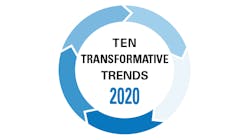As healthcare continues on its evolution toward a value-based care system that underscores caring for and engaging with patients on various different levels, industry leaders are increasingly realizing that integrating behavioral and physical health has great potential to bend the cost curve. Yet this type of care coordination has proven to be quite challenging to date.
Fortunately, inroads are being made across the country, such as in Massachusetts, where behavioral health agency Aspire Health Alliance, based in Quincy, serves as the administrative lead for two community partner programs stemming from the state’s Medicaid program, MassHealth, which oversees 16 accountable care organizations (ACOs).
For complex patients with behavioral and mental health needs, ACOs in the Boston and southeastern Massachusetts region receive support from Aspire Health Alliance, which uses technology to identify and intervene with beneficiaries when they arrive in the emergency department (ED). “Most of our members have not been going to their primary care physician, and have not been getting any kind of care for their [various] comorbid conditions, for a whole host of reasons. Our job is to find them in the community, engage them, build a trusted relationship, and then start to put together the services and support they need to need more stable and healthy lives,” says Deborah Jean Parsons, Ph.D., the director of integrated care at Aspire.
Parsons, who has worked in the community-based mental health space for more than 30 years, says behavioral health providers have historically worked to help get their members food stamps, housing, or aid in other ways, depending on their specific needs, but the missing piece has always been coordinating care in conjunction with the medical community. Aspire, however, is working to break those traditional norms.
The organization has seven teams within its two community partner programs; each one is led by an independently licensed mental health clinician and a registered nurse, along with care coordinators who are “the boots on the ground,” explains Parsons, who adds that nurses and social workers reach out to physician practices and hospital EDs, as well as meet with members to help them understand what their diagnosis means. “You need to connect the behavioral health side with the medical side so that the primary care physician knows the therapist this individual is seeing, and vice versa. That way, they each know which medications the person is being prescribed by the other. This is a huge piece,” she contends.
Parsons and her team firmly believe the number-one way to reduce costs to the healthcare system is to keep them out of the ED if they don’t need to be there, since the ED is “’treat and release’, meaning you’re not getting the best care. The [top] responsibility of our care coordinators is making sure everyone gets to their physician,” she says. As such, in the Aspire’s integrated care model, a person-centered treatment plan is developed with each of its members based on their goals. That plan then goes to a primary care physician—someone who the member might have never seen before—who is both part of the plan and signs off on it, she explains.
Part of the program’s design, Parsons notes, involves creating the necessary infrastructure to share information across systems with Aspire’s ACO partners, as well as with hospital EDs, other providers, and the care coordination team, “so we’re actually sharing information in real time about patients as they move throughout the system.” The key to making this happen has been leveraging a care collaboration platform from Utah-based solutions provider Collective Medical that sends an alert to Aspire, via its event notification system, that one of its members has presented in the ED. Most of the time, that alert comes within five minutes of the patient presenting, says Parsons.
More broadly, the Collective platform provides two critical services for Aspire: helping the organization find people, and then engaging and following up with them. On the first front, she notes that oftentimes, phone calls to members will go unanswered, and sometimes the address or phone number doesn’t even work. “Remember, this population has been underserved and living in precarious situations, such as being homeless or addicted. But when we see they have presented in the ED, we call the ED to tell them we just got an alert that one of our members is in your ED and that we want to speak with them. We have found that these members, who are often in crisis, will [take you up] on that offer when you tell them you are there to help,” says Parsons.
Finding the patient can have quite an impact, such as getting him or her a recovery coach or medication-assisted treatment. And that’s where the second service from Collective comes into play; Aspire has a longitudinal view on the 12-month history of that person, “which is great data since it gives you a good sense of the person’s struggles and challenges,” says Parsons. At that point, patients can voluntarily admit themselves into one of Aspire’s programs. From there, the organization is tasked with a variety of services, depending on need, such as providing transportation to and from doctor’s appointments, filling out housing or disability applications, getting into rehab programs or finding jobs. These services end whenever the individual chooses, she notes. Since adoption, the number of patients enrolling in a behavioral health program has increased by 150 percent, touts Parsons.
Similar care integration is happening in King County, Wash., where Navos Mental Health Solutions, a community mental health agency, specializes in serving patients with moderate to severe mental health illnesses and substance use disorders. As is the case for many mental health providers, like Aspire Health Alliance, tracking these patients can prove quite difficult, as many of them transition regularly between hospital visits and specialized behavioral care. Just like their Northeast peers, organizational leaders turned to Collective Medical to better facilitate transitions of behavioral health patients between hospitals and other facilities.
With the care collaboration platform, case managers and social workers at Navos could pull regular reports to find and identify their patients at highest risk and work collaboratively with clinical supervisors, medical directors, pharmacists, psych nurses, and members of the King County Public Health department to determine the best plans of care for each patient.
Another key element is having a nurse care manager who is put in Navos’ adult outpatient clinic to bridge medical and mental healthcare. Some of Navos’ clients end up in the ED upwards of 100 times a year, leading the nurse care manager to focus on these folks specifically, aiming to ensure they have appropriate primary care, with the goal to reduce ED visits. Using this care coordination tool, when Navos gets notified that a client has presented in the ED, it became twice as likely that the client would receive appropriate follow-up care within 30 days.
How are HIEs helping?
Although there historically hasn’t been much success with data movement among behavioral health providers or from behavioral health to clinical care providers, health information exchanges (HIEs) have the potential to fill an important gap.
The Utah Health Information Network (UHIN), for instance, via its clinical health information exchange (CHIE), connects two local behavioral health providers with other clinical care providers on its network. The behavioral health facilities submit to the HIE a list of patients they take care of, and from that list, anytime one of those patients presents or gets discharged from a hospital or ED that’s also connected on the network, an alert is sent to the behavioral health provider who the patient is a member of, explains Cody Johansen, director of operations at UHIN.
Once the behavioral health provider gets that alert, it can log into UHIN’s provider portal to view the information from the facility where the patient had the visit. Sometimes, the behavioral health provider’s case manager is even able to go to the ED in person, or at least have a phone call with the emergency room physician to discuss a care plan for the patient, offers Matt Hoffman, M.D., CMIO at UHIN.
Both Johansen and Hoffman point out that without some kind of alert system in place, the behavioral health provider likely wouldn’t know the patient was ever in the ED. Even if the patient happened to show up to his or her next visit with the behavioral health provider, that information might never be shared, they say. “We hear from the behavioral health providers who say it’s very valuable to be able to receive this data and know that this encounter happened,” Johansen says.


